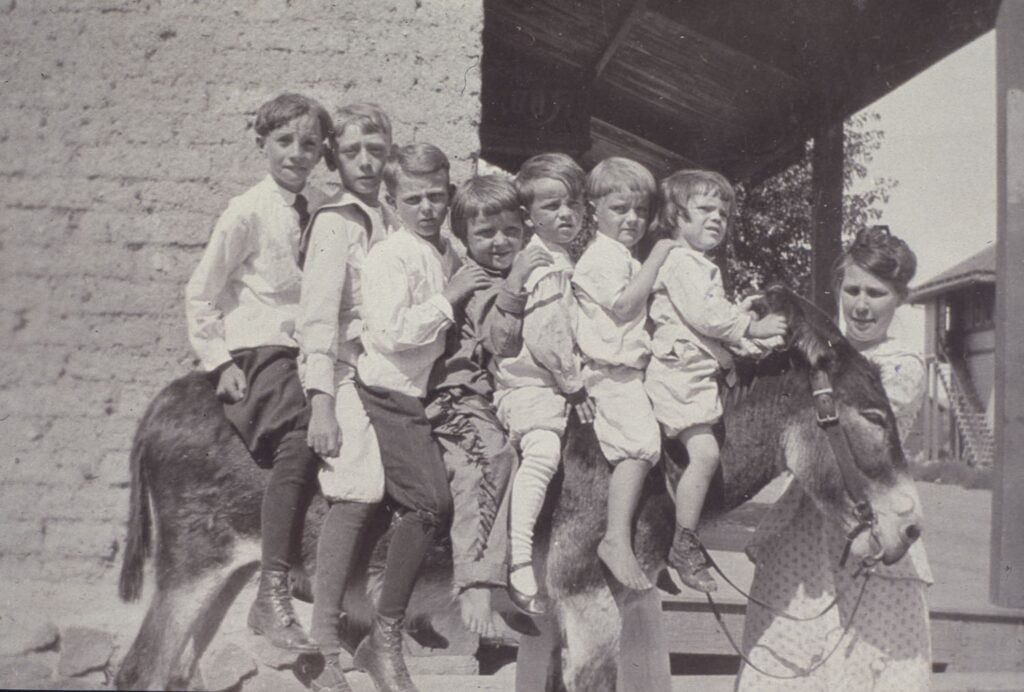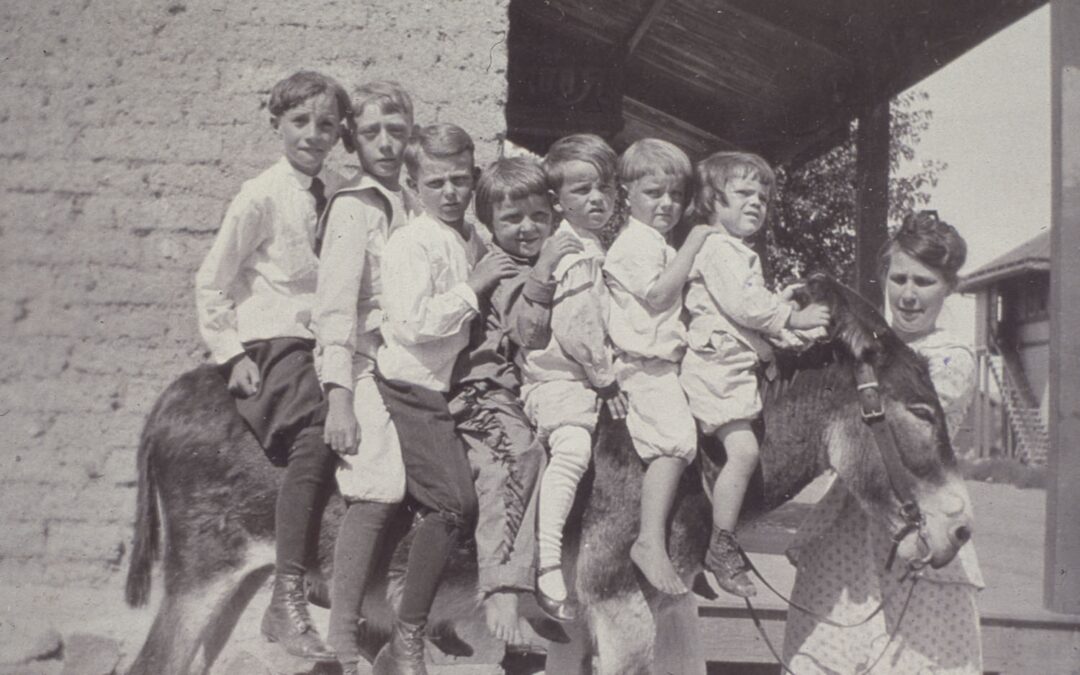
The three R’s, readin’, writin’, and ’rithmetic, like many other cultural conveniences, were late arriving on the Arizona frontier. The first territorial legislature in 1864 provided for a system of public schools but levied no school taxes. Two hundred and fifty dollars were given to Arizona’s first educational institution, the San Xavier mission school near Tucson. The county seat towns of Prescott, La Paz and Mojave were each offered $250 dollars and Tucson $500 but each town had to raise matching funds. Prescott was the only town to qualify for the grant.
The Fourth Territorial Legislative Assembly passed a bill in 1867 creating school districts in Arizona. At the time Anson P. K. Safford became governor in 1869 there were no public schools operating in Arizona. He persuaded the legislature to pass the school law of 1871 and schools were required to remain open for at least three months a year. A year later the first public school opened in Tucson for boys.
The lifestyle for young people residing in the territory was not conducive to learning the 3 Rs. Some communities were so rowdy that the citizens could assume no responsibility for any pranks their offspring might choose to inflict upon the teachers. One teacher in Tombstone came home from school one day to find his house had been painted with polka dots. Another took a pistol away from a youthful cherub and angrily tossed it into the pot-bellied stove. However, she forgot to remove the cartridges and the resounding gunfire inside the stove loudly punctuated her oversight.
Funds were not always available for schools, and the teachers had to make use of whatever materials and structures at hand. Josephine Brawley Hughes opened the first public school for girls in Tucson in an old brewery, while New York-born Mary Elizabeth Post taught pupils in Ehrenberg in an abandoned saloon Occasional an old prospector would wonder into the classroom looking to buy a drink in his old stomping grounds. Later she taught in a three-room adobe building in Yuma that had formerly served as the city jail. Graffiti scratched on the walls gave mute testimony to the characters and interests of the previous occupants, along with serving to broaden the educational horizons of the pupils.
One of the most articulate of the early educators was a former soldier named John Spring. He arrived with the Army in 1866 and decided to stay when his enlistment was up. His teaching career began in an adobe structure with a dirt floor that frequently had to be sprinkled with water to hold down the dust. The parents, in anticipation of future need, brought him a supply of ash flogging sticks. School opened with 138 students in one class, ranging in age from 6 to 21. Only a small few spoke English.
A teacher usually wouldn’t be hired if they couldn’t pass the qualification exam. That wasn’t always the case, though. In Florence, an applicant was hired anyway as the board member confessed he couldn’t pass it either.
In his last message to the ninth legislature in 1877, Governor Safford, today known as the “Father of the Arizona Public Schools,” was pleased to report much progress in educating the territory’s youth. He said about half of the nearly 3,000 children of school age in Arizona had learned to read and write.
Still, public education had a long way to go. When the University of Arizona opened its doors in 1891, there were still no public high schools in Arizona. So how did the youngsters qualify for a university education? They attended prep classes at the university until they qualified to begin their college education.
Some 40 years ago I became acquainted with a former schoolteacher named Ruby White. As a rookie teacher during the Mexican Revolution of 1910 she taught at a one-room school in Palominas near the border. She told of kids coming to school wearing their pistols, chaps and spurs. She also told of the Mexican rebels pulling a cannon up that mountain overlooking Naco, Sonora hoping to get a better trajectory by firing down on the besieged federales. Each time they’d fire the recoil would send the canon back down the hill. They’d have to go get it and pull it back up again. They could only fire five or six times a day. She said the students were excited at first but after a while following a shot one would say casually, “There goes that ol’ cannon again.”






